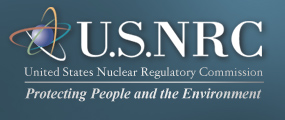Resolution of Generic Safety Issues: Item A-33: NEPA Review of Accident Risks ( NUREG-0933, Main Report with Supplements 1–35 )
DESCRIPTION
In 1971, the AEC determined that, consistent with NEPA, the environmental assessments of requests for construction permits and operating licenses should include consideration of the possible impacts from accidents. An Annex to 10 CFR 50, Appendix D was proposed which provided guidance to applicants in this regard. This guidance was included in Regulatory Guide 4.2 and has constituted, since 1971, the basis for the staff reviews.
Since 1971, a considerable number of "realistic" accident assessments have been made. In substance, these reviews have uniformly shown that the risks associated with potential accidental releases are very low.
The approach in these assessments, typically, is limited to preparation of a two-page narrative summary that qualitatively describes accident probabilities and the rationale for concluding that accident risks are low and a one-page table that provides numerical estimates of consequences of various categories of accidents (excluding Class 9 events). The approach to developing these consequence estimates also involves a largely simplistic analysis; minor adjustments are made from case to case (basically to account for variations in power level, exclusion boundary distance and population density). These numerical estimates are also limited to air pathway consequences.
The staff's environmental statement by its nature is typically the only document concerning NRC license reviews that receives wide public and government agency attention and exposure even though other documents are circulated and are available. It is evident from the comments received on the staff's statements that the present approach does not adequately inform the public regarding the substance and depth of NRC's safety reviews nor adequately respond to public and various government agency questions dealing with the risks of accidents.
The Environmental Protection Agency (EPA) and the Department of the Interior (DOI) expressed the need for an improved treatment of accident risks and an expansion of the staff assessments to include quantitative estimates of Class 9 events.
Beginning in 1973, in response to EPA concerns, the staff augmented its assessments to discuss the then ongoing Rasmussen Study as it related to Class 9 risks.
For its part, EPA agreed that updating of the standard assessment was not warranted until after the Rasmussen Study results were made available. This dialogue was renewed in 1976 with EPA recommending that a generic environmental statement be prepared on accident risks. After extended discussions, the NRC staff reiterated its 1973 commitment to update the standard assumptions in the proposed Annex A. As a precursor to this update, the staff committed to an extension of the WASH-140016 study to include a more in-depth evaluation of Class 3-8 accidents and to further explore the significance of variations in site and plant design characteristics.
DOI has routinely suggested that more attention be given to the site risks associated with the liquid pathway. In mid-1977, DOI and NRC staff met to discuss the DOI generic concerns. DOI was informed of the staff's programs to augment the generic studies in WASH-140016 but no commitments were made to revise the current approach (which, as noted above, includes no discussion of the impacts of accidental releases to the liquid pathway).
Another issue that has surfaced during the last few years relates to the lack of guidelines on situations which require substantially different (more detailed/ different scope) treatment. In the cases of CRBRP, OPS/AGS, and Fulton/Summit, substantial departures from the standard assumptions were required; for example, requests were made for analyses to support the claimed conclusion that Class 9 risks were low, comparable to typical LWRs. In the cases of CRBRP and OPS, substantial schedular delays have resulted, apparently because the applicants were not aware that the standard guidelines regarding the treatment of Class 9 accidents applied to a limited design/site envelope. Additional guidelines need to be developed to help avoid future situations as these. This item is documented in NUREG-0371.2
CONCLUSION
This Environmental issue has been resolved by a Commission decision on SECY-80-131 to implement an interim policy in which accidents are considered on a risk specific basis.412 This policy was published in the Federal Register on June 13, 1980 (45 FR 40101). It is being implemented by the Accident Evaluation Branch (AEB) of DSI.
REFERENCES
|


